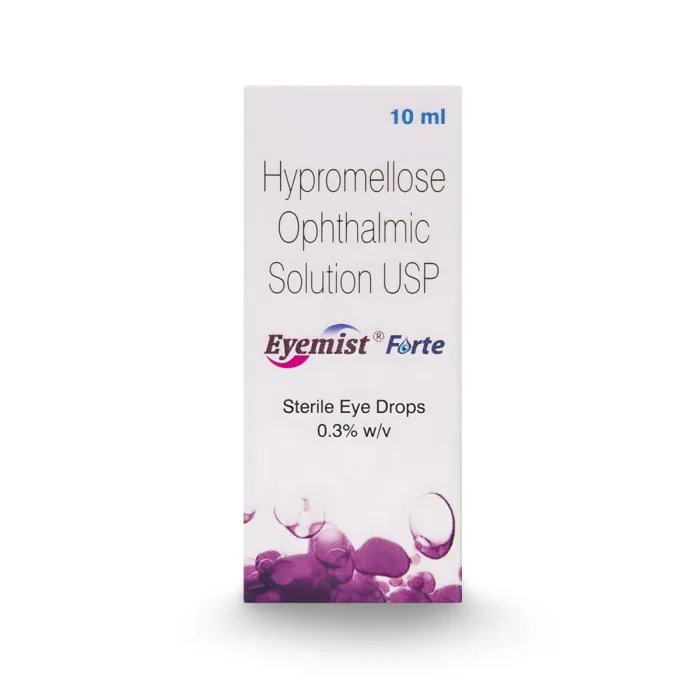Uveitis is a complex eye condition that occurs when the uvea, the middle layer of the eye, is inflamed. It can affect people of all ages.
This eye condition may occur due to an infection, autoimmune disease, or injury. A person may have Uveitis in one or both eyes, which may range from mild to severe.
It can cause various discomforts, one of which is Uveitis headache. But is this headache real?
This article will discuss whether Uveitis causes headaches. We will also discuss some characteristics of this headache.
Does Uveitis Cause Headaches
Like other eye conditions, Uveitis can also cause headaches. Other ocular conditions that may cause headaches include pink eye (Conjunctivitis) and Scleritis.
Uveitis is an inflammation of the uvea, the back part of the eye. It can cause symptoms like redness in the eye, blurry vision, and headache.
Headache is not a primary but a secondary symptom of Uveties. Eye discomfort caused by Uveitis can result in headaches.
To understand how long blurred vision lasts due to Uveitis, read How Long Does Blurred Vision Last With Uveitis: Unveiling The Facts.
Save up to 90% on your medicine bills

Eyemist Forte 10 ml

Milflox 0.5% 5 ml

Restasis 0.05% Ophthalmic Emulsion

Pred Forte 10 ml
Understanding Uveitis Headache
Now that we have established that Uveitis can cause headaches, let us discuss some characteristics of Uveitis headache.
This section will discuss the location of headaches, their pain characteristics, and more.
Location
Patients with Uveitis generally complain of having a unilateral headache. The pain is usually concentrated around the affected eye.
A person may experience pain in and around the eye, which may sometimes radiate to the forehead and temple on the same side.
Pain Characteristics
Unilateral headaches, such as those caused by Uveitis, are generally described as a dull and throbbing ache.
They are marked by piercing, burning, and throbbing pain on one side of the head and around the eye or temple.
Light Sensitivity
Light sensitivity or photophobia is a common symptom of Uveitis. It can be painful when the eye is exposed to light.
This light exposure can also worsen the Uveitis headache.
Eye Redness
Eye redness is another distinctive symptom of Uveitis. The blood vessels in the white part of the eye (sclera) can become dilated and appear red.
This can cause eye discomfort and contribute to Uveitis headache.
Light sensitivity and eye redness are also common symptoms of Conjunctivitis.
To better understand the difference between the two conditions, read “Uveitis vs Conjunctivitis: How is Uveitis Different From Conjunctivitis?“.
Causes of Uveitis Headache
Uveitis headaches are primarily caused by the inflammation within the eye.
The exact reasons for Uveitis can vary, including infections, autoimmune diseases, or underlying medical conditions.
Identifying and treating the underlying cause is crucial to managing the Uveitis headache.
Diagnosis and Treatment for Uveitis Headache
Diagnosing Uveitis and addressing the associated headache requires a comprehensive examination by an ophthalmologist.
Treatment typically focuses on reducing eye inflammation and managing pain. It may involve the use of anti-inflammatory eye drops, oral medications, or, in severe cases, corticosteroids.
The doctor may suggest over-the-counter painkillers for headaches.
If you wish to explore more about Uveitis treatment, read A Comprehensive Guide to Uveitis Treatment.
To further explore Uveitis medications, read Understanding Uveitis Medication Treatment.
Final Outlook
Uveitis is a serious eye condition that is characterized by inflammation of the uvea. It can cause discomfort by causing symptoms like eye redness, light sensitivity, and blurry vision.
Some people with Uveitis may also experience headaches due to the eye discomfort. Headache caused by Uveitis is commonly called Uveitis headache.
Uveitis headache typically occurs on one side of the head and around the affected eye. It is a dull and throbbing headache.
Uveitis symptoms like light sensitivity and eye redness can worsen Uveitis headache.
Treating the underlying cause of Uveitis can help relieve these symptoms and manage the headache.
An eye care specialist may conduct a comprehensive eye exam to diagnose Uveitis and address the associated headache.
They may prescribe anti-inflammatory eye drops and oral medications to reduce inflammation. They may also suggest over-the-counter painkillers for Uveitis headache.

Frequently Asked Questions
Can stress worsen Uveitis headaches?
Yes, stress can worsen headaches in general, and Uveitis headaches are no exception.
Stress management techniques may help alleviate symptoms, but proper medical treatment is essential for long-term relief.
See our Recommendations
Can over-the-counter pain relievers help with Uveitis headaches?
Yes, over-the-counter pain relievers may provide temporary relief. But they won’t address the underlying cause of Uveitis.
It’s crucial to consult a healthcare professional for proper diagnosis and treatment.
See our Recommendations
Can Uveitis headaches be managed with lifestyle changes or dietary adjustments?
No, while a healthy lifestyle can positively impact your overall well-being, Uveitis headaches are primarily managed through medical treatment to address the underlying eye inflammation.
Lifestyle and dietary adjustments may complement treatment but are not a standalone solution for this condition.
See our Recommendations
How long do Uveitis headaches typically last?
The duration of Uveitis headaches can vary in individuals. They may persist as long as the Uveitis inflammation is active.
With appropriate treatment, headaches often improve as the underlying condition is controlled. Early diagnosis and treatment can help minimize the headache duration.
See our Recommendations
Are there any long-term complications associated with Uveitis headaches?
Yes, if Uveitis is not effectively managed, it can lead to various eye complications, such as Cataracts, Glaucoma, or vision loss.
The headaches themselves are typically a symptom of the underlying eye inflammation. Managing Uveitis and its associated symptoms is essential to minimize potential long-term complications.
See our Recommendations
Cheap Medicine Shop only refers to credible, authoritative sources for our content. If you’re curious about how we ensure the integrity of our content, we encourage you to read our Content Information Policy.














